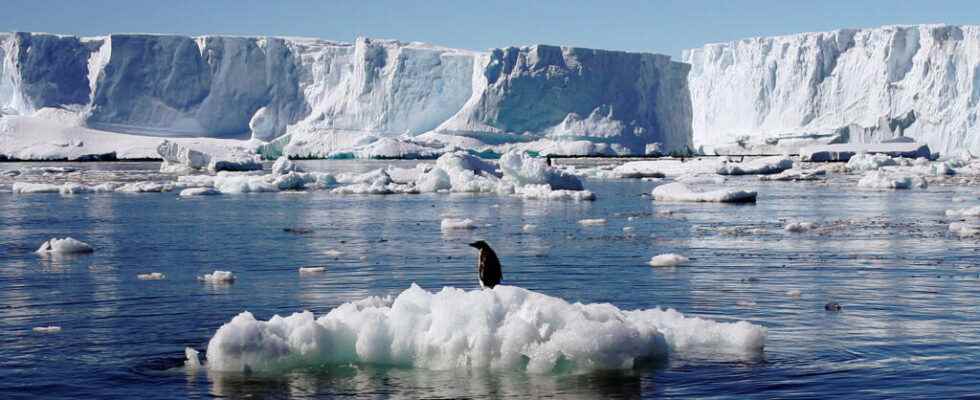It’s a record that we would have done without. In Antarctica, at the South Pole, the extent of the sea ice is at an all-time low for the month of January. This is reported by Copernicus, the European Union’s climate change observatory.
This is a record for a month of January. The sea ice extent is 31% less than the Antarctic average. The year 2023 continues the trend observed in 2022. In February of last year, the size of the sea ice reached 2 million km², barely larger than the surface of Mexico. This is its historic low.
Antarctica, where it is currently summer, experienced record heat in 2022, up to 40 degrees above normal for the season, for a few days in March.
On the other side of the globe, in the Arctic, this time it’s winter. But here too, the sea ice surface is below average for the month of January. And it’s a vicious circle: the melting of the ice is caused by climate change which, in turn, accelerates global warming.
Because when the pack ice melts, only the ocean remains, and unlike the pack ice, the ocean does not reflect the sun’s rays. It absorbs them, heats up and contributes to global warming.
Very rapid global warming
On the European continent, January 2023 was the third hottest January on record, Copernicus also announced. New Year’s Day temperatures, in particular, hit historic highs in the Balkans and across the eastern part of the continent.
The unusual winter temperatures came after Europe’s hottest summer on record brought droughts and deadly fires to the continent, where the world’s climate is warming fastest.
Europe saw 3rd warmest January on record.
Antarctic sea ice extent reached its lowest for January.
New Year’s Day saw record temperatures in Europe with 0.6°C higher than any previous daily January value in the full #ERA5 data record back to 1940.
More: https://t.co/Tue7z0qSas pic.twitter.com/gOtGFztP73
— Copernicus ECMWF (@CopernicusECMWF) February 8, 2023
